The Aircraft Spotlight typically looks at an airplane type and evaluates it across six areas of particular interest to flying clubs and their members: Operating Cost, Maintenance, Insurability, Training, Cross-Country, and Fun Factor.
This month we’re doing something a little different. We’ll look beyond the certified market of Cessnas, Pipers and Cirrus to explore some Experimental and Light Sport Aircraft that are attractive options for flying clubs. It’s fair to say across the board that all of the aircraft featured have low operating costs, low maintenance costs, and are fun to fly. So instead of breaking things down by category, we’ll provide an overview of the RV-12, RV-9A, and RV-10, as well as the SkyRanger and Sling TSI. For even more options, see the December 2021 Aircraft Spotlight, which featured the Vashon Ranger R7, Icon A5, the RV-14, the two-seat Tecnam P2008 and the four-seat Tecnam 2010.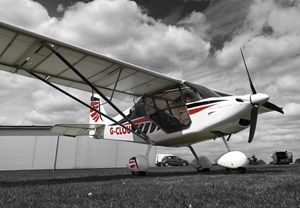
SkyRanger
The SkyRanger is Britain’s best-selling fixed-wing microlight that is now available in the United States. It is a low-cost, easy to build high-wing LSA. It looks like an airplane, but it’s built more like an ultralight with a tube and bolt, tube and pin assembly, according to US Distributor Tabor Coates. “Somebody referred to it recently as an Ikea airplane—it's very easy to build and easy to repair,” he said. Build time is estimated to be only 250 hours to 300 hours.
“I believe it's what a Light Sport plane should be,” Tabor said. “In the early days of Light Sport they were saying you could buy a complete plane for the price of an SUV. Well, this one you can. You can fix it yourself and you could burn car gas in it. It's just a great little airplane.”
It was originally developed in France in the early 1990s and sold as a kit. Today the kits are produced in Ukraine. Despite the war, manufacturing has continued. However, it has slowed delivery time from three months to approximately six months. There are about 1,700 flying worldwide and about 100 of the older SkyRangers flying in the US.
There are two models to choose from—the Nynja, powered by the 100-hp Rotax 912 ULS and the Swift 3, powered by the 80-hp Rotax 912 UL. The two have similar fuselages but the Nynja has longer wings and composite panels for the exterior, which reduces drag.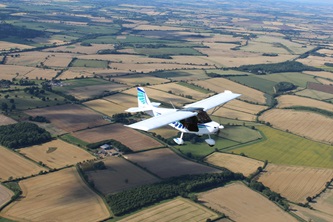
Both versions have a 15.9-gallon fuel tank, and wing tanks are being developed that would increase fuel capacity to 30 gallons. The SkyRanger cruises at about 90 knots with a fuel burn that is 4.5 to 5 gph. The useful load is about 750 pounds, which means two people can comfortably fly in the aircraft.
The Swift 3 kit costs about $23,000, plus another $20,000 to $25,000 for the engine. When you add the avionics and some options the total cost for the Swift is in the mid-$50,000 range. The Nynja kit starts at about $29,000 and a complete aircraft with engine and avionics will be in the mid-to-high-$60,000 range, Tabor said.
SkyRanger Nynja
Seats: 2
Engine: Rotax 912ULS, 100-hp
Fuel Capacity: 15.9 gallons
Range: about 300 nm
Cruise: 90 Kts
Empty Weight: 573 lb.
Gross Weight: 1,320 lb.
Useful Load: 747 lb.
Cost: about $50,000 for the Swift 3 kit, engine and avionics
About $65,000 for the Nynja kit, engine and avionics
Van’s RV-12
The RV-12 is offered as a kit (E-LSA) or factory built (S-LSA) from Van’s, the leading manufacturer of homebuilt kits with well over 10,000 aircraft flying. Since it debuted in 2008, more than 1,100 RV-12 kits have been sold and there are about 600 flying. It has two seats, side-by-side, control sticks, and is only offered with a nose wheel. It is the only RV that can be flown by a Light Sport Pilot. That is the reason the Kingdom Flyers in Lancaster, PA chose to build one for their club (See this month’s Club Spotlight). It is also the only RV that has easily removable wings for transport or storage
The RV-12 has either the 100-hp Rotax 912 ULS or the fuel injected Rotax 912iS. It burns about 4.5 gph and can run on auto fuel, making it a very economical aircraft to fly. Its light weight provides generous useful load, meaning two larger people can comfortably fit in the aircraft. It has a 20-gallon fuel tank and cruises at about 110 knots, making it a capable cross-country aircraft.
It has a bubble canopy, and you sit up somewhat high, providing excellent visibility. Like all RVs it has light, responsive controls, but it is not aerobatic.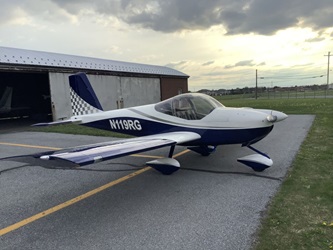
A factory-built RV-12iS starts at $125,000, and with the “premium package” of avionics including a Garmin GTN 650, dual G3X screens and an autopilot, increases the costs to $183,000. If you choose to build an RV-12, Van’s estimates a build time of about 800 hours, which is the quickest kit they offer to build. A standard kit with engine and avionics will cost about $100,000.
RV-12
Seats: 2
Engine: Rotax 912iS, 100-hp or Rotax 912ULS
Fuel Capacity: 20 gallons
Range: 581 nm
Max Cruise: 117.3 Kts
Empty Weight: 775 lb.
Gross Weight: 1,320 lb.
Useful Load: 545 lb.
Cost: $100,000 – standard build kit including engine or avionics
$125,000 – base factory-built RV-12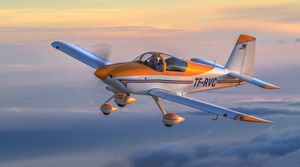
Van’s RV-9A
What distinguishes the RV-9A from other Van’s aircraft is a longer wing, providing higher speeds and climb rates with excellent slow flight capabilities.
“The RV-9a will slow down for landing but get up and get out of its own way for flying cross country,” Kingdom Flyers member Dan Geib said. “It’s a very reasonable flying airplane. It is docile and handles very well.”
Engines can range from a 118-hp Lycoming to the 160-hp Lycoming O-320. With a 36-gallon fuel tank, a fuel burn of 7.5 to 8 gph, and a cruising speed of about 160 knots, the RV-9A makes a nice cross-country aircraft for two people. Like the RV-12, it has side-by-side seating and is not aerobatic. It has a sliding canopy and can be either a taildragger (RV-9) or have a nosewheel (RV-9A).
RV-9A
Seats: 2
Engine: Continental O-320, 160-hp
Fuel Capacity: 36 gallons
Range: 608 nm
Max Cruise: 162.5 Kts
Empty Weight: 1,075 lb.
Gross Weight: 1,750 lb.
Useful Load: 675 lb.
Cost: $34,550 – standard kit w/o engine or avionics
$52,195 – quick build kit w/o engine or avionics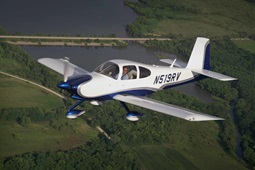
Van’s RV-10
If you’re looking for a plane for four people with excellent performance, the RV-10 is a good option. Even though it’s the only Van’s aircraft that has four seats, it has a stick and the signature light controls and responsiveness of other RVs.
Its gullwing doors make entry into the 46-inch-wide cabin easy. Van’s says the plane comfortably holds people who are 6’-4” or taller with plenty of head room and legroom. It can carry four full-sized adults, full fuel and baggage. One option is to change the back seat so it can hold three children.
Dan Geib built two RV-10s – one for the Sky Blues Flying Club and the other for the JADA Flyers, both based in Lancaster, PA (see this month’s Club Spotlight). One of the things that attracted Dan was the six-cylinder, 260-hp IO-540 Thunderbolt engine. The aircraft is fast with a cruise speed of about 200 mph at 75 percent power at 8,500 feet Dan said. It’s also economical, burning about 10.5 gph.
The standard kit holds 60 gallons of fuel, but there is an aftermarket kit to increase fuel capacity to 90 gallons if you want. For avionics, the JADA Flyers chose a full Garmin suite with dual G3Xs and the GTN 750xi, a G5, and autopilot
“It’s a beautiful platform of an airplane,” Dan said. “It has four seats, more horsepower, and faster cruise. You can build it out to how you want it. You can have it as basic as you want it or you can make it as advance and luxurious as you want.”
The RV-10 may be bigger than the other Van’s aircraft, but it still leaves you with the RV grin.
Van’s RV-10
Seats: 4
Engine: Continental IO-360, 210 hp or Lycoming IO-540, 235 hp to 260 hp
Fuel Capacity: 60 gal
Range: 815 nm
Max Speed: 201 mph – 211 mph
Empty Weight: 1520 - 1630 lbs.
Gross Weight: 2700 lbs.
Useful Load: 1070 lbs.
Cost: $61,350 – standard kit w/o engine or avionics
$80,850 – quick build kit w/o engine or avionics
Sling TSI
The Sling TSI is similar to the RV-10. It seats four passengers, has gullwing doors, and has a respectable cruise speed of 170 mph, which is a little slower than the RV-10. The biggest difference between the two aircraft is the firewall forward.
The Sling TSI features the 141-hp Rotax 915iS turbocharged engine, while the RV-10 generally has a 260-hp Lycoming IO-540. “One of the big things that attracted me to the airplane is, it's an actual modern FADEC-controlled turbocharged engine,” Rob Smith said. “I think it provides more reliability long term. I don't have to worry about a mixture knob. The engine is always running optimally, monitoring itself.”
The Sling holds 52 gallons of gas and burns about 7 gph, giving it a range of 880 miles with a reserve, making it a solid cross-country aircraft that is economical to operate. The standard leather seats are slightly reclined in the 44-inch-wide cabin. There is plenty of headroom and legroom, making it a comfortable cross-country platform.
Rob said, “It is incredibly easy to fly.” It only needs two fingers on the stick and it is really gentle. Stalls are docile and the visibility is excellent. A few things that make it different than the RV-10 – it has a steerable nosewheel and no toe brakes, just a brake lever. All RVs have a free castering nosewheel.
Rob and two partners purchased a Sling TSI and did the builder assist program offered at the company’s U.S. distributor in Torrance, CA. The kits are manufactured in South Africa, where the company is based, but it has distributors throughout the United States offering builder-assist programs in Idaho, Michigan, and New York. Buyers may also choose a standard or quick build kit. Rob said prices range from $150,000 to $200,000 for a kit and engine.
Rob and his partners chose several options including a ballistic parachute, which added 70 pounds, as well as an oxygen system, and a full Garmin panel with dual G3Xs, a GTN 650 and GNS 500 autopilot. Those additions, along with the builder assist, brought the cost of their Sling TSI to about $350,000.
Sling TSI
Seats: 4
Engine: Rotax 915iS Turbocharged, 141 hp
Fuel Capacity: 52 gal
Range 880 nm @ 75% power with 45-minute reserve
Max Cruise: 148 Kts
Empty Weight: 1,102 lb.
Gross Weight: 2,094 lb.
Useful Load: 992 lb.
Cost: about $350,000 – as built with engine, avionics, ballistic parachute, and build assist program